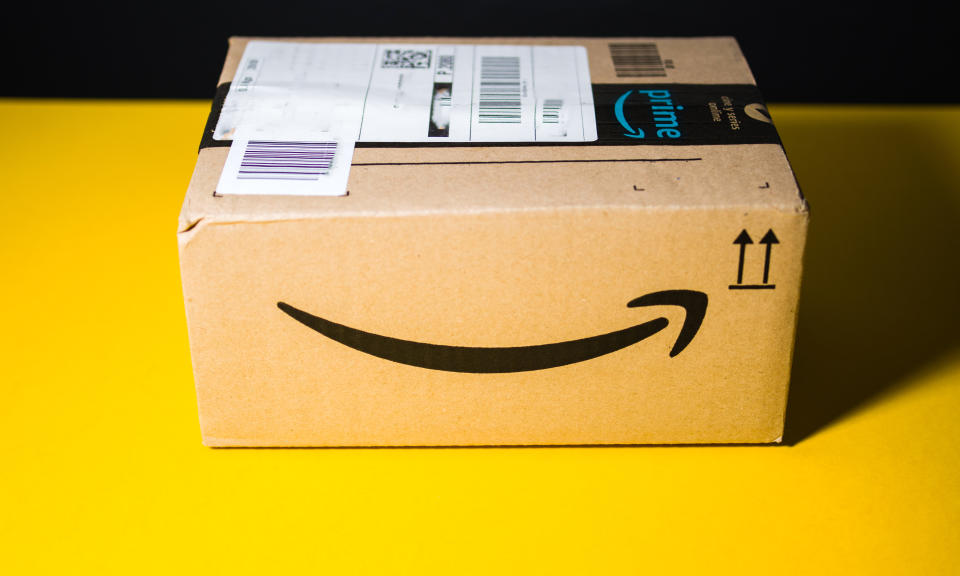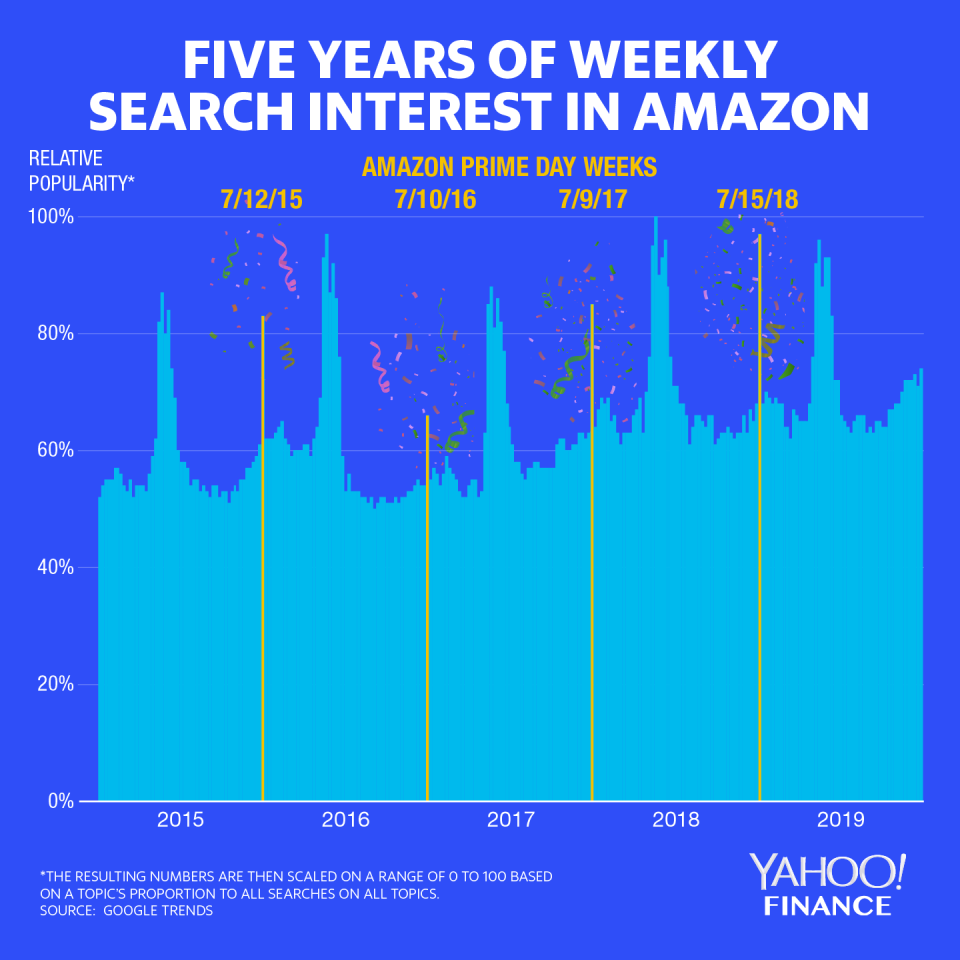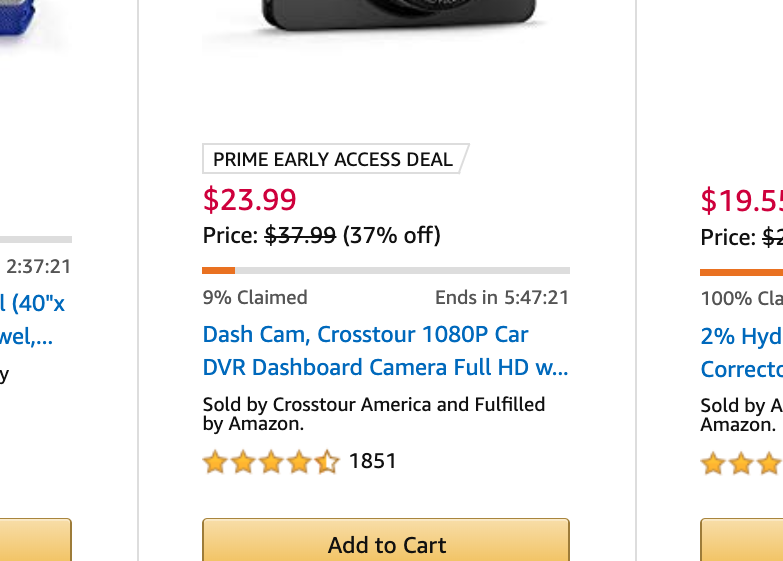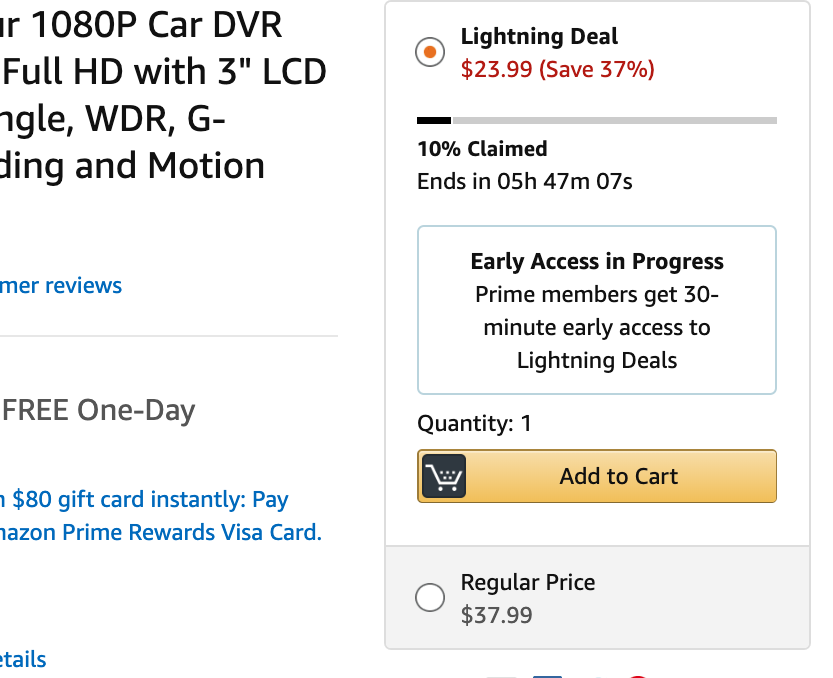How Amazon Prime Day uses your psychology to get you to buy
Last year, members of Amazon’s Prime (AMZN) service bought 100 million products during its annual “Prime Day,” which actually went 36 hours. The hyped event led the website to crash numerous times in 2018.
Data-driven companies like Amazon carefully harness the psychology of its consumers, and nowhere is this more evident than on Prime Day.
At its base, people love Amazon Prime Day because they love deals. Getting a deal is like a win; it’s adding something to your life at a better cost because you were either lucky or cunning enough to time your purchase right and locate the right deal.

Tom Meyvis, a professor at NYU Stern School of Business who studies consumer behavior, said that at its most basic, Prime Day is just a sale.
“Sales have a bunch of psychological mechanisms,” said Meyvis. “People love stuff cheaper than the reference price. They use it as a heuristic — a sign that something’s a good deal rather than rationally looking at what’s the regular price and how much I’d be paying now.”
But Amazon does many things that elevate Prime Day from just another sale. A big part of that is the exclusivity. This is not a sale that just anyone can participate in, you must be a member — and this is the reward.

“For Amazon, it’s positioned as a reward for Prime members,” Meyvis said. “You get special deals on special days, just for you.”
Jonah Berger, a marketing professor at Wharton who has written a book about why things catch on, told Yahoo Finance that holidays — even made up ones — can be effective.
“Amazon Prime Day brings together two things people love: holidays and deals,” he said. “Holidays are already associated with celebration and a departure from the norm, so to feel like you’re also getting a special chance to save money only makes it even better”
Scarcity, timing, and FOMO
There are many more specific psychological mechanisms at play that Amazon leverages.
First, the deals are so good that they might entice more people to sign up for Prime – which now costs $119 a year. And once they do, Amazon knows they will stay and fail to cancel, Meyvis said.
But the holiday itself is positioned as an event that can break consumer inertia and force a decision for a purchase. The deals are simply too good — and Amazon employs a trick.

“These promotions are very time sensitive,” said Meyvis. “It’s a one[ish]-day event, and then the prices go back to normal. It forces people into a decision to act on their intentions if they’re in the market.”
It goes even deeper than that. Amazon deals often feature countdown clocks that add to the sense of urgency given that the time is measured in hours, minutes, and seconds.
The sense of urgency is multiplied by the idea that products are scarce and deals can run out, something that Berger calls “opportunity compulsion.” There is a bar that shows the percentage of deals that are claimed, suggesting the price will rise before the time is up — another nudge to action to seal the deal.
A viral holiday
Amazon Prime Day is really just sale, but the company has leveraged its size to take it a few steps further.
“In some ways it’s actually very conventional,” said Meyvis. “What’s not conventional is the scale of it. Amazon is such a big marketplace — therefore, you get viral effects. That creates some enthusiasm that you otherwise would not have.”
Amazon is not the first company to make its own “holiday” to sell stuff. Black Friday has been around for years, Cyber Monday (the Monday after Thanksgiving) since 2005, and Singles’ Day (Nov. 11) has been growing in China every year thanks to big promotions from Alibaba and JD.com.
These companies aim to capitalize on social media buzz surrounding deals, particularly if the discount figures are high enough.
“There is a social aspect to it as well, just like Black Friday and Cyber Monday, where people talk to each other and post on social media,” said Meyvis. And of course, these sales attract the attention of media and news publications, also aware of the public’s love of bargain — further blowing up the sale into a viral moment. (Yahoo Finance is no exception.)
Amazon does run a risk
Amazon’s scope does mean that individual products don’t have the same oomph behind them that most sales have.
”You do build some excitement and get additional publicity through social media, but for the individual product, every item will get less attention,” Meyvis noted. “There are only so many you can talk about. Which is why Amazon is using this too to push its own products.”
In fact, last year 11 of the most popular 20 products sold were Amazon’s own offerings.
Amazon may be leveraging its own brands, of which there are many and different types, to solve that issue, but consumer behavior experts like Meyvis see Prime Day as potentially having a sharp downside.
One of the things Meyvis studies is regret, and big sales show consumers a new standard of what the best possible price could be. When that price goes back up, people who missed the boat may find their perspectives have changed in one of two ways.
The first way recalls the time-sensitive aspect of Amazon’s strategy. “People buy because they anticipate regretting not purchasing,” said Meyvis. “That’s something that all these retailers play up when they give time-sensitive discounts.”
But there’s a flip side to this that most people don’t understand, Meyvis said. If they don’t take advantage, a phenomenon called “inaction inertia” can come into play.

“If you don’t act on a deal, the next time you see the product — even if it's at a reasonable price or the same — you’re less likely to buy it,” said Meyvis. That’s because Prime Day completely rewires what we think a good deal can be. Now the regret might play another way, because consumers know they’re not getting the best deal possible.
“Do too much of this and eventually you’ve trained consumers to only take action when there is a deal,” said Berger, evoking many retailers like JCPenney, Gap, and more.
The other thing that happens to people who pass up a deal is that they end up thinking poorly of the product in a bizarre, paradoxical way.
“We tell ourselves we don’t want to feel regret and we convince ourselves we don’t want the product,” said Meyvis. “You denigrate the product so you don’t feel bad about not buying it.”
Part of it comes from the difference of the reference price, if you see from a sale that it’s only “worth” 60% of what it’s listed as — because that’s the price you once saw.
In any event, this downside hasn’t appeared to hinder Amazon. In the past five years that Amazon’s been doing Prime Day, interest has grown substantially, though the company has guarded details closely. If Google Trends is anything to go by, the company has managed to create a mountain of interest in what is typically a summer desert.
Editor’s note: This post was originally published on July 12.
-
Ethan Wolff-Mann is a writer at Yahoo Finance focusing on consumer issues, personal finance, retail, airlines, and more. Follow him on Twitter @ewolffmann.
How Amazon leverages data for its brick and mortar stores
Amazon is using its winning Marketplace strategy for its ‘Our Brands’ section

 Yahoo Finance
Yahoo Finance 